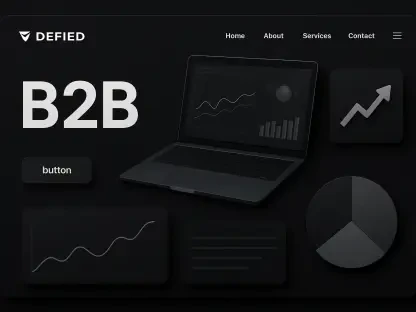In the fast-paced digital landscape of 2025, ecommerce businesses are racing to secure top spots on search engine results pages, yet many grapple with a pressing question: how long until SEO delivers tangible results? With organic search driving nearly 53% of website traffic for online stores, according to recent industry data, the stakes are high to understand the timeline of search engine optimization. This report dives deep into the SEO journey, offering a detailed month-by-month breakdown of what businesses can expect, alongside critical factors that shape success in today’s competitive environment.
Understanding the SEO Journey: Why Time Matters
SEO stands as a cornerstone for long-term digital growth, distinct from the immediate impact of paid advertising. Unlike pay-per-click campaigns that yield instant visibility, organic search strategies build momentum gradually, relying on search engines like Google to crawl, assess, and rank web pages based on relevance and authority. This process demands a sustained commitment, as results emerge over months rather than days.
Search engines operate on complex algorithms that evaluate websites through multiple stages, from discovery to indexing and finally ranking. Each stage involves analyzing content quality, technical health, and user engagement signals, which means businesses must wait for these systems to process and reflect changes. For many, this delay can be frustrating, especially when immediate returns are expected.
For ecommerce businesses and website owners, setting realistic expectations is crucial. Patience becomes a strategic asset, as premature conclusions about SEO effectiveness can derail efforts. Understanding that meaningful outcomes often require a consistent investment of time and resources helps align business goals with the gradual nature of organic growth.
Month-by-Month SEO Timeline: What to Expect in 2025
Month 1: Building the Foundation with Audits and Planning
The first month of an SEO campaign centers on establishing a robust groundwork. Technical audits take priority, uncovering issues like broken links or crawl errors that could hinder search engine access. Setting up analytics tools ensures accurate tracking of progress from the outset.
Key activities include in-depth keyword research to pinpoint relevant search terms and crafting a content strategy that aligns with business objectives. Identifying competitor gaps during this phase offers a roadmap for differentiation. However, businesses should anticipate no visible ranking shifts at this stage, as the focus remains on preparation.
Expectations must be tempered with the reality that this initial period is about laying a solid base rather than seeing immediate gains. The efforts in auditing and planning are investments that pave the way for future visibility, even if search engines have yet to reflect these changes in rankings or traffic.
Month 2: Strengthening Technical SEO and Starting Content
With a foundation in place, the second month shifts toward enhancing technical aspects of the website. Refining site architecture for better navigation and submitting XML sitemaps to search engines accelerate crawling and indexing processes. Structured data implementation also begins to improve chances of appearing in enhanced search results.
Content creation kicks off, focusing on high-quality pieces that target long-tail keywords with informational intent. These early articles or pages aim to address specific user queries, building relevance in niche areas. The dual focus on technical fixes and content sets the stage for gradual recognition by search engines.
At this point, visible results remain minimal. While search engines start to notice structural improvements, rankings and traffic typically show little movement. This period tests resolve, as the lack of immediate feedback can be discouraging, yet it remains a critical step in the broader strategy.
Month 3: Optimizing On-Page Elements and Publishing
The third month emphasizes on-page optimization, refining elements that directly influence user interaction and search visibility. Product and category pages are polished with targeted keywords, while meta titles and descriptions are crafted to boost click-through rates from search results.
Initial blog content rolls out, with a handful of well-researched posts designed to support the overarching content plan. These pieces aim to attract early attention from searchers seeking information related to the business’s offerings. Publishing at this stage marks the transition from planning to active engagement with search engines.
While impressions in search results may begin to tick upward, significant ranking improvements are unlikely. The focus remains on building a portfolio of optimized pages that search engines can evaluate over time. Patience continues to be essential, as the impact of these efforts has yet to fully materialize.
Month 4: Seeing Early Traction and Handling Fluctuations
By the fourth month, some ranking movements become noticeable, though stability is not yet guaranteed. Search engines often test pages by shifting their positions, a phase that can lead to temporary bounces in rankings. This experimentation reflects how algorithms gauge user response to recent changes.
Consistency in publishing high-quality content remains vital, alongside early outreach for backlinks from relevant sources. Gains may appear in low-competition keywords, with some pages reaching higher positions. Impressions in search tools typically increase, signaling that visibility is starting to build.
Businesses should brace for volatility during this period. While early wins are encouraging, fluctuations are a natural part of the ranking process. Maintaining focus on quality and strategic outreach helps navigate this transitional phase, setting the stage for more consistent progress ahead.
Month 5: Entering the Growth Phase with Organic Traffic
The fifth month often marks the first clear signs of growth, as organic traffic begins to show steady upward trends. Pages optimized earlier start gaining traction, potentially driving initial sales or conversions. Rankings for transactional keywords improve, directly impacting revenue opportunities.
Search engines may also reward well-structured content with features like rich results, enhancing visibility further. These developments indicate that the foundational work is paying off, as user engagement metrics begin to align with search engine priorities. The momentum achieved here is a testament to prior efforts.
Sustaining this growth requires ongoing optimization and content updates. Businesses must capitalize on these early successes by refining strategies and addressing any emerging gaps. The upward trajectory in traffic and clicks becomes a motivator to double down on effective tactics.
Month 6: Achieving Measurable Results and ROI
By the sixth month, many ecommerce sites experience measurable returns on their SEO investments. Stable rankings for moderately competitive keywords emerge, and analytics reveal clear attribution of organic traffic to sales. This milestone often signifies the first consistent ROI from SEO efforts.
For those not seeing expected outcomes, a thorough review is necessary. Technical audits can uncover lingering issues, while content quality and keyword alignment should be reassessed. Identifying and addressing blockers at this stage prevents long-term stagnation in performance.
The compounding effect of consistent publishing and optimization becomes evident now. Businesses that maintain their focus on quality and adaptability are likely to secure top positions in search results. This period underscores the importance of persistence in achieving sustainable growth.
Month 7 and Beyond: Leveraging Compounding Gains
After six months, SEO efforts often transition into a phase of compounding benefits. Topical authority strengthens as search engines recognize the site as a credible source within its niche. New content ranks more easily due to established trust and relevance.
Domain authority grows through accumulated backlinks and user engagement, boosting the performance of all pages. Refreshing older content and expanding into adjacent niches become effective strategies for maintaining momentum. This ongoing cycle of improvement solidifies the site’s competitive edge.
Long-term success hinges on a commitment to regular updates and strategic expansion. Building content hubs around key topics and targeting higher-competition terms can further elevate visibility. The gains achieved now reflect the cumulative impact of sustained dedication to SEO principles.
Key Factors Influencing Your SEO Timeline
Several critical elements shape the speed and success of an SEO campaign. Domain age and history play a significant role, with older sites often ranking faster due to established trust. Newer domains or those recovering from penalties face longer timelines to gain credibility with search engines.
Competition within a niche directly affects progress, as highly saturated markets demand greater effort to outrank established players. Content quality and consistency are equally vital, with in-depth, original material outperforming superficial efforts. Backlink profiles also influence outcomes, as high-quality links from trusted sources accelerate authority building.
Technical SEO and user experience cannot be overlooked, as issues like slow load times or poor mobile design delay indexing and rankings. For ecommerce sites, focusing on niche keywords in competitive spaces or prioritizing site speed offers practical ways to mitigate delays. Addressing these factors strategically can significantly shorten the path to results.
The Ongoing Nature of SEO: Maintenance and Updates
SEO is not a one-time endeavor but a continuous process requiring regular attention. Search engine algorithms evolve frequently, and user expectations shift, necessitating ongoing updates to content and technical elements. Staying relevant in search results depends on adapting to these changes.
Regular audits, ideally conducted every three to six months for ecommerce businesses, help identify technical issues or content gaps before they impact performance. Refreshing outdated material on a consistent schedule ensures sustained relevance. These practices prevent declines in visibility over time.
Monitoring tools like Google Search Console are indispensable for tracking performance and spotting opportunities for improvement. Keeping a close eye on crawl errors, index coverage, and user behavior metrics enables proactive adjustments. A commitment to maintenance ensures that SEO efforts remain effective in a dynamic digital landscape.
Future Outlook: Adapting SEO Strategies for 2025 and Beyond
Looking ahead, SEO strategies must evolve with emerging trends shaping the industry. AI-driven content tools are transforming how material is created and optimized, offering efficiency gains for businesses. Voice search optimization continues to rise in importance as more users rely on spoken queries.
Mobile-first indexing remains a priority, with search engines favoring sites optimized for handheld devices. User experience metrics, such as page load speed and interactivity, are expected to weigh more heavily in ranking algorithms. Staying ahead requires integrating these elements into core strategies.
Adaptability is the key to future success in SEO. Businesses must invest in innovative tactics and remain vigilant about algorithm shifts. Embracing change and prioritizing user-centric approaches will position ecommerce sites for sustained growth in the competitive years from 2025 to 2027.
Conclusion
Reflecting on the detailed exploration of SEO timelines, it becomes evident that patience and persistence are indispensable for achieving measurable outcomes. The month-by-month journey illustrates how foundational efforts gradually translate into organic traffic and sales, with most businesses witnessing significant strides within six months. Moving forward, the actionable step is to initiate or refine SEO strategies by focusing on niche keywords and technical health to accelerate progress. Additionally, investing in regular audits and staying attuned to trends like AI tools and mobile optimization offers a pathway to maintain a competitive advantage in an ever-evolving digital space.









